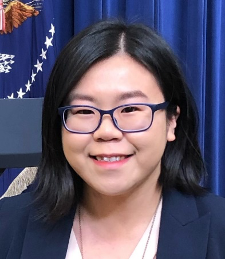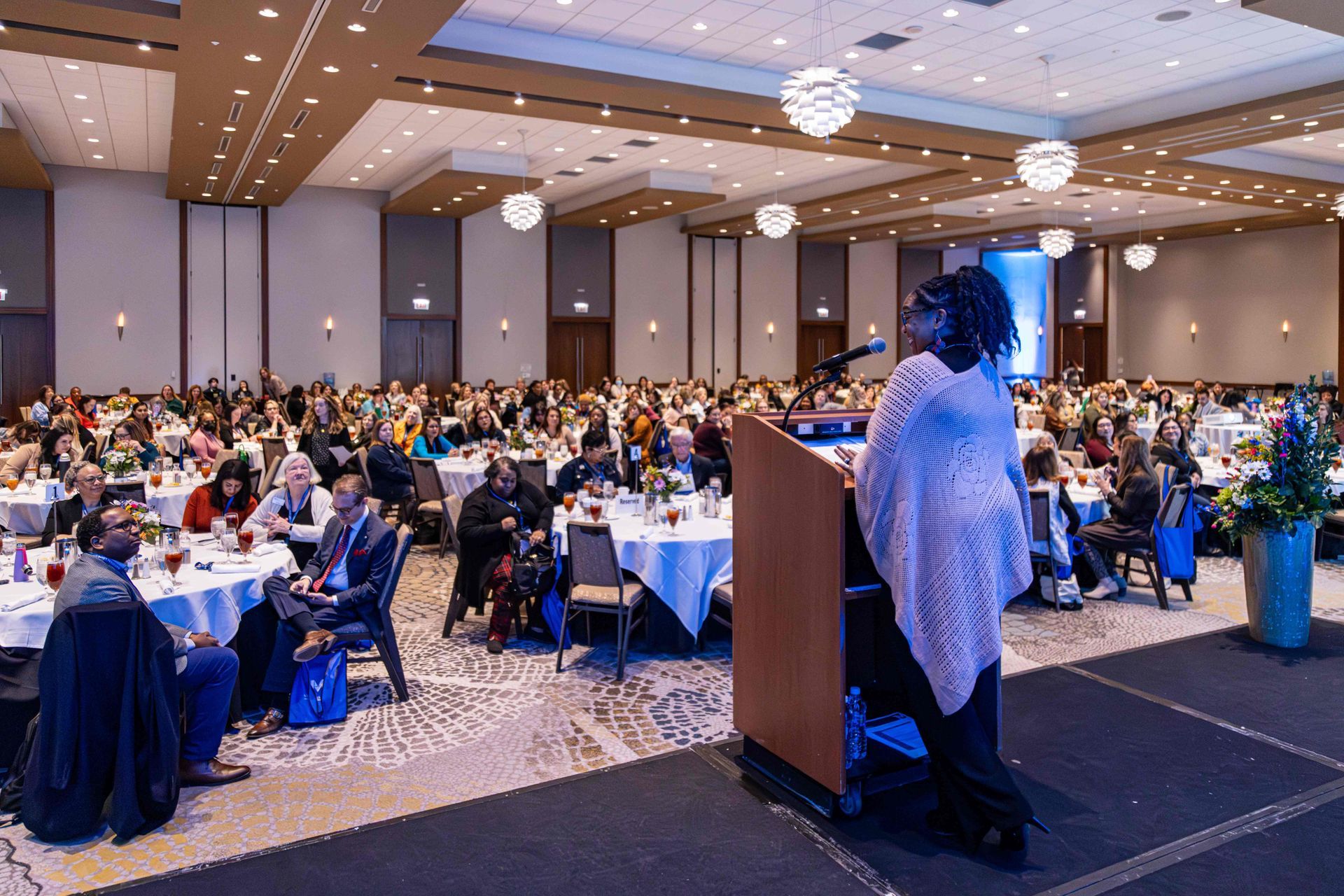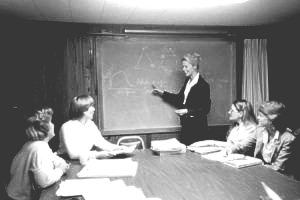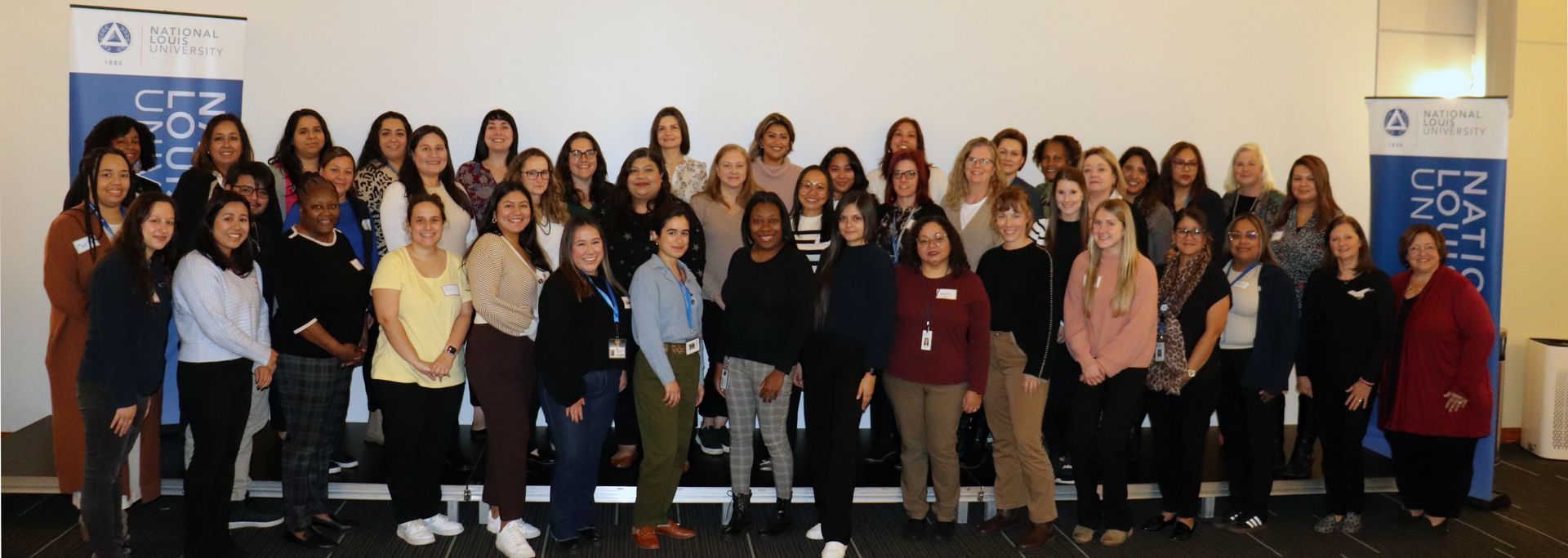BY Paula Steffen, M.A. | March 12, 2025
This document may be printed, photocopied, and disseminated freely with attribution. All content is the property of the McCormick Center for Early Childhood Leadership.
Let’s talk about something that doesn’t always get the spotlight in leadership discussions—empathy. Often overlooked and categorized as a “soft skill,” empathy is rarely listed as a top leadership quality, yet it plays a crucial role in success. If you are a center director, coach, or leader in early childhood education, your role goes beyond keeping schedules on track and ensuring compliance with licensing and various funding streams –it’s about people. Your teachers, children, and their families rely on you. Empathy is the glue that holds it all together.
Looking at key leadership frameworks and research, we see that empathy isn’t just a complementary trait; it’s a fundamental strength that can transform your leadership effectiveness. Effective early childhood leadership requires the integration of administrative leadership, pedagogical leadership, and leadership essentials. Examples of how empathy strengthens each of these domains are listed below:
Administrative Leadership:
- Creating schedules that consider staff’s personal obligations
- Developing policies that balance program needs with staff wellbeing
- Managing resources in ways that show you understand classroom challenges
Pedagogical Leadership:
- Supporting teachers’ professional growth with sensitivity to their learning styles
- Providing feedback that acknowledges both strengths and areas for growth
- Understanding and accounting for different teaching philosophies
Leadership Essentials:
- Building trust through consistent empathetic responses
- Making decisions that demonstrate care for all stakeholders
- Fostering a culture where emotional intelligence is valued
WHAT MAKES EMPATHY A LEADERSHIP STRENGTH?
We hear a lot about qualities like confidence, organization, and decision-making in leadership. But what about the ability to truly understand and connect with those around you? That’s where empathy shines. According to Strength-Based Leadership, the best leaders don’t try to be good at everything—they lean into their natural strengths. If empathy is one of yours, you have an incredible tool to build relationships, boost morale, and create a culture where people thrive. Research shows empathetic leaders:
- Recognize and meet their team’s needs. When teachers feel overwhelmed, frustrated, or unsupported, you notice—and you step in with understanding and solutions.
- Create a culture of trust. When people feel heard, they feel valued, and that leads to a team that’s more engaged and invested.
- Foster collaboration. Empathy helps you navigate conflicts and create an environment where teamwork flourishes.
- Make better decisions. Considering different perspectives leads to solutions that truly work for your staff, children, and families.
- Reduce burnout. When educators feel seen and supported, they’re more likely to stay in the field and continue making a difference.
FIVE WAYS TO CULTIVATE EMPATHY IN LEADERSHIP
If empathy isn’t one of your strongest traits but you’d like to strengthen this skill, here are some steps to help you develop it.
- Listen—really listen. Put down the to-do list and be present in conversations.
- Try perspective-taking. Before making a decision, ask yourself how it impacts your teachers and families.
- Be open about your own challenges. Vulnerability builds trust and connection.
- Support staff well-being. Encourage breaks, check in on emotional health, and offer resources.
- Model empathy daily. Your team follows your lead—set the tone with compassion and understanding.
EXAMPLES OF APPLICATION IN EARLY CHILDHOOD SETTINGS
Empathetic qualities can be applied in early childhood programs in the following ways:
Daily Leadership Practices
- Start meetings with genuine check-ins
- Practice active listening without immediately problem-solving
- Take regular walks through classrooms to sense the emotional climate
- Keep a reflection journal about team dynamics
Program Development
- Create mentorship programs that emphasize emotional intelligence
- Develop professional learning communities that support emotional growth
- Establish feedback systems that honor all perspectives
Staff Support
- Implement regular one-on-one check-ins
- Create safe spaces for sharing concerns
- Develop emotional intelligence training opportunities
- Recognize and celebrate emotional competence
Empathy is not just a leadership trait; it is a transformative strength that enriches early childhood centers. When leaders cultivate empathy, they create an environment where educators, children, and families thrive. By embedding empathy into leadership practices, early childhood directors and coaches can build resilient teams, foster emotional intelligence, and ultimately enhance the quality of early childhood education.
As you reflect on your own leadership journey, consider: How can you use empathy to strengthen your impact today?
REFERENCES
Rath, T., & Conchie, B. (2013). Strengths based leadership: Great leaders, teams, and why people follow. Gallup Press.
Masterson, M., Abel, M., Talan, T., Bella, (2019). Building on whole leadership: Energizing and strengthening your early childhood program. Gryphon House Publishing.
Sipe, J. W., Frick, D. M. (2009).
Seven pillars of servant leadership: Practicing the wisdom of leading by serving. Paulist Press.
Paula Steffen, M.A., is the Manager of Quality Supports and Evaluation for the Center for Early Childhood Leadership in the McCormick Institute for Early Childhood at National Louis University. In this role, she serves as a National Anchor for the Program Administration Scale (PAS) and Business Administration Scale for Family Child Care (BAS). Previously she served as a State Assessor conducting assessments using the PAS, BAS, Classroom Assessment Scoring System (CLASS), and Environment Rating Scale (ERS) tools for ExceleRate – Illinois’ Early Childhood Quality Rating and Improvement System. In addition, she was the Illinois State Assessor Anchor for the PAS, BAS, and Infant Toddler Rating Scale (ITERS). Prior to joining McCormick in 2007, Paula was the Professional Development Manager for Illinois Network of Child Care Resource and Referral Agencies, co-owned a child care center, and worked as a director and professional development advisor in both Head Start and community college-based programs. Paula holds a Bachelor of Arts degree in family and consumer sciences from Iowa State University and a Masters of Education in early childhood administration from National Louis University.





